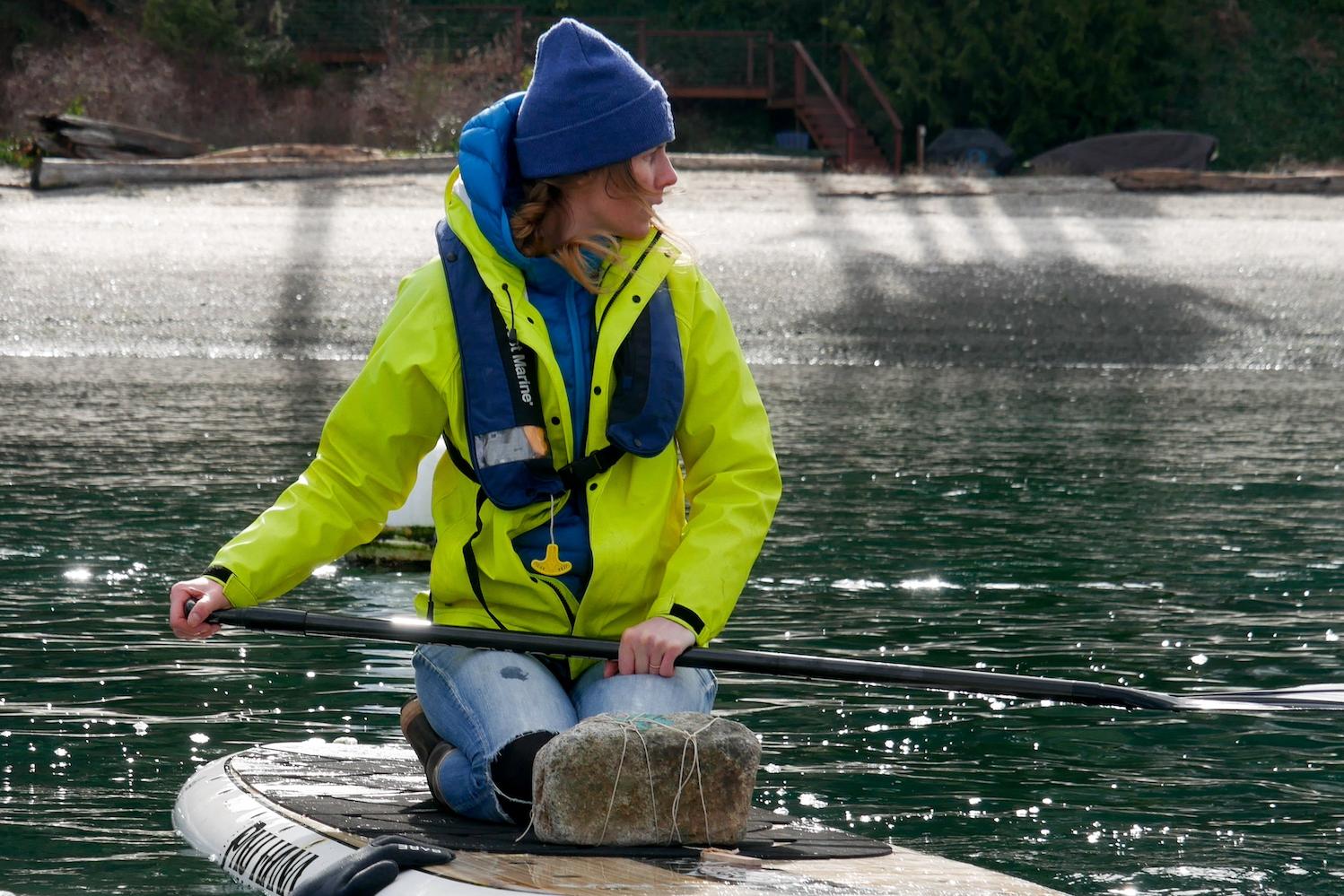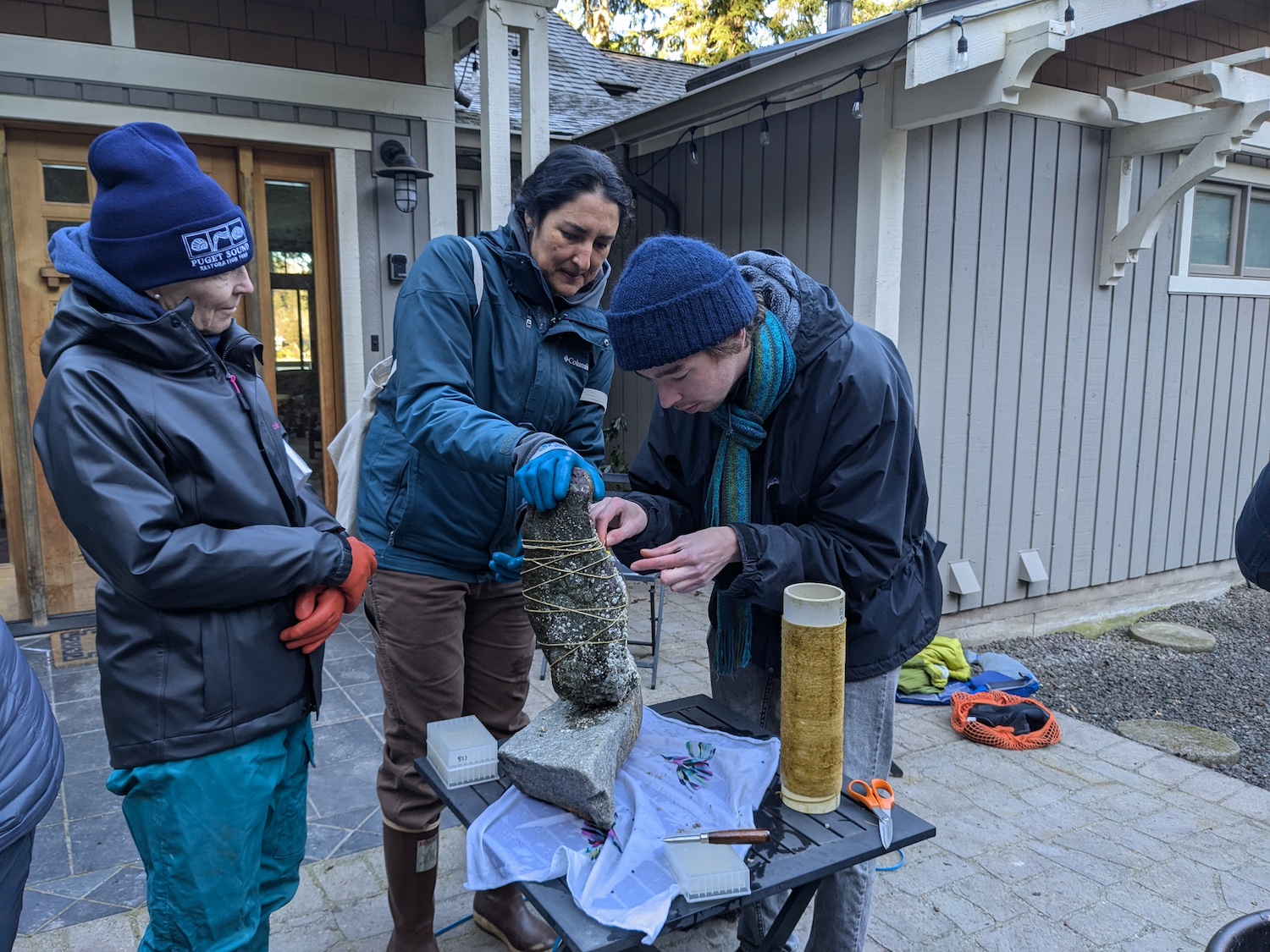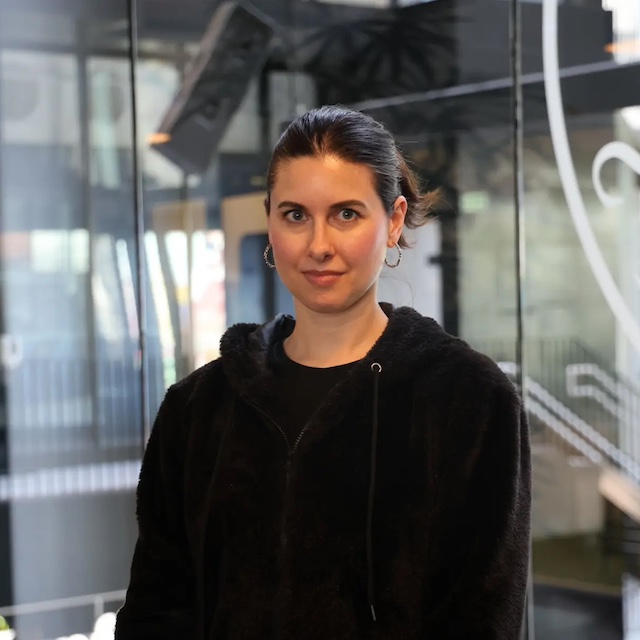
The Puget Sound Restoration Fund team is testing a unique, low-tech kelp restoration method that uses materials like rocks and rope to anchor kelp in place. (Image courtesy of Puget Sound Restoration Fund.)
Western Washington state is famous for its forests, with huge, old-growth evergreen trees. Offshore, beneath the waters of Puget Sound, a second type of forest grows.
From roots on the rocks below to floating bulbs at the surface, a seaweed called bull kelp spans the water’s depth. Along the kelp’s length, many animals find a home. Fish like cod, salmon, and herring use these forests as nurseries, where young fish can grow before venturing out. Orca whales even use it as a grooming tool, breaking off stalks and rolling them between two whales to clean their skin.
But the underwater forests are in trouble. Threats like pollution and warming waters make it harder for bull kelp to grow. Researchers at the Puget Sound Restoration Fund, a nonprofit based on Bainbridge Island off the coast of Seattle, are working to bring these forests back. One of its most unique kelp restoration concepts is kelp gardening, a low-tech growing method with high community involvement.
This year, the nonprofit’s kelp gardens didn’t survive. Still, it is ready to try again next year, and local community members are getting excited about restoring kelp.
Kelp forests in decline
Full-grown bull kelp looks strong, like its namesake, the bull whip. But it has to survive a delicate infancy to get there. That’s not easy in water that is warming due to climate change. When the water is too warm, young kelp can’t survive long enough to attach and start growing from the seafloor. Summer heat waves can even kill off adult kelp.
“Kelp have been proven to be pretty sensitive to changes in temperature,” said Jessi Florendo, habitat program coordinator at Puget Sound Restoration Fund. Specific pollutants or invasive species might also contribute to the kelp forests’ decline, but it will take more research to know for sure. Still, Puget Sound Restoration Fund researchers are using what they know now to save the kelp. They’ve tested different ways to grow and plant it since 2019.
“That's been a very awesome opportunity to pull out some of the best practices — what life stage, what time of year — like how do we create the rule book of: This is how kelp restoration can happen perfectly?” Florendo said.
Searching for simple solutions
One challenge for Puget Sound Restoration Fund experts is that high-tech kelp restoration methods are often expensive and time-consuming. “The kelp gardening was sort of born out of the [idea]: ‘Okay, now that we have some sense of how things go, how can we do that as low-tech as possible?’” Florendo said.
The team decided to base this new project on Bainbridge Island, near their office, and make the design so simple that they wouldn’t even need the permits often required for large aquaculture projects and building offshore structures in the United States.
“We figured out we can't put anything on the seafloor, so no [kelp] anchors or anything like that,” Florendo said. “But if we moved natural substrate, like if we found a good boulder and just took it out of the water and put it back in the water, that'd be totally fine.”
The researchers also decided to test different biodegradable materials to grow kelp on, rather than the nylon typically used. In 2024, the project’s first year, they tried plant fibers: cotton, jute and sisal. None of it worked. Later, Florendo learned that jute and sisal can actually be toxic to young kelp.
So, the team went back to the drawing board. They learned of an experiment in Ireland that successfully grew kelp on wool and decided to try it at five growing sites in 2025. Some were waterfront property sites offered by Bainbridge Island residents, while others were at a recreational community waterfront.
Puget Sound Restoration Fund researchers tied wool and cotton twine around volleyball-sized rocks on the seafloor and attached young kelp to the twine. Then, community members helped with planting, either throwing kelp-laden rocks over the sides of kayaks or diving to place them on the seafloor. One site was especially far offshore, so a group of recreational divers and a local with a boat volunteered to plant and monitor the kelp there.

Empty waters again
For months, the 2025 kelp crop seemed promising. If it touched the top of the water, that would mean it had reached adulthood. The team expected to see kelp bulbs bobbing on the water as summer arrived, but they were disappointed by empty waters instead. It is likely that the biodegradable twine decayed too quickly, and the kelp was washed away before it could fully attach to the rocks.
Even though it’s Puget Sound Restoration Fund’s second year trying, this failure wasn’t totally surprising. The nonprofit has successfully grown kelp in more elaborate high-tech ways, but the simplicity of kelp gardening brings new challenges.
“This is a very exciting but extremely experimental method,” Florendo said. “Unfortunately, we’re still at the throw spaghetti at the wall and see what sticks stage.”
It might require a new type of twine, for example, or a new way of tying it. Once the method sticks, though, the researchers will be able to bring kelp gardening to more places. Already, other Puget Sound communities are excited about the prospect.
“The expectation and the hope is that when kelp gets to the surface, [people] can then kayak or paddle board or access it in more recreational ways,” Florendo said.
The clock is ticking. If kelp forests decline too far, the region could lose an essential ecosystem. Without having all the answers, experts must look for solutions, especially ones that can be implemented quickly and inexpensively. So, until it’s time to plant for 2026, Puget Sound Restoration Fund researchers will be in the lab, deciding what to do differently for next year’s kelp gardening season.
“We just can't hold our hands and wait until we have the best practice to go about trying,” Florendo said.

Elyse Hauser is a freelance writer from the Pacific Northwest whose work focuses on environmental issues and solutions. As a lover of all things aquatic, she often writes about water and its ecosystems, from rivers to the deep sea. She has an MFA from the University of New Orleans, and has also learned from the Center for Investigative Journalism (SUJO) in Bergen, Norway.














